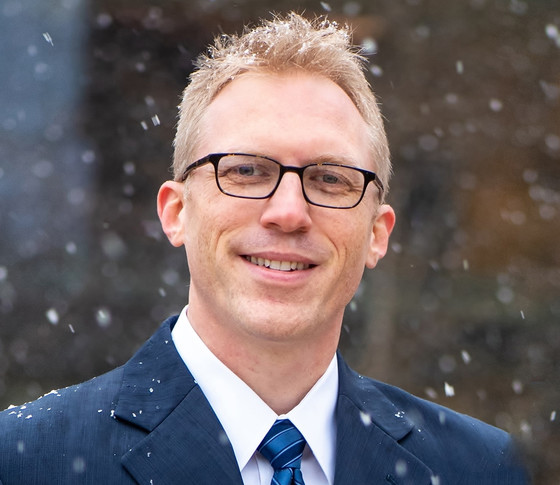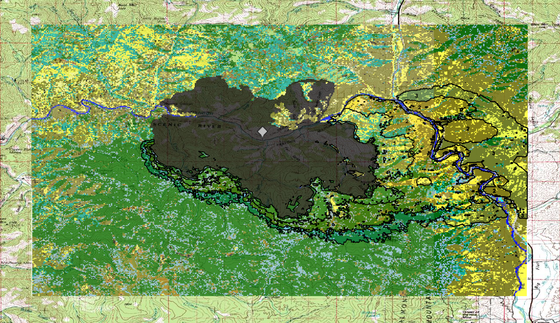|
President Biden signed into law funding for the federal government at the end of the year. The Consolidated Appropriations Act, 2023, includes a four percent increase for Interior’s wildland fire management, for a total of nearly $1.2 billion. It also provides $340 million for the wildfire suppression reserve fund, which Interior can tap into when needed for suppression operations.
This funding will enable the Interior Department to increase the number of permanent federal and Tribal wildland firefighters. It provides increased support for wildfire suppression operations. It invests in expanded activities to reduce the risks and impacts of wildfires. And it invests more in research to better understand climate change and wildland fire.
The omnibus also includes provisions to better support wildland firefighters. It directs the Office of Personnel Management to analyze potential reforms to improve pay for all federal firefighters. In addition, both the omnibus and the recently enacted National Defense Authorization Act authorize Interior and our federal partners to conduct a comprehensive study on the long-term health effects of wildland firefighting.
The Interior Department is investing $228 million from President Biden’s Bipartisan Infrastructure Law to support wildland fire management in fiscal year 2023. This funding is the first of several allocations to be made this year and will support continuing pay increases for federal firefighters, new training opportunities, fuel management work to reduce fire risk, burned area rehabilitation to help speed recovery after fires, and increased funding for science that will examine the impacts of climate change on fire management.
The $228 million investment follows $180 million in Bipartisan Infrastructure Law support for wildland fire management programs in fiscal year 2022, for a total of $408 million in funding. With support from these new investments and in coordination with partners, the Department has laid the groundwork to expand wildland firefighter training, develop a geospatial wildfire risk mitigation planning tool, and increase local firefighting capacity.
Read the full December 14 news release…
The U.S. Bureau of Reclamation brings water to more than 31 million people and 10 million acres of farmland across the 17 Western states, and it is the second largest producer of hydroelectric power in the U.S. As wildfires increase in size and intensity, the water bodies, land, and infrastructure managed by Reclamation are increasingly at risk. In late 2021, Reclamation established a National Wildland Fire Management Program Coordinator position. The position will develop the program so Reclamation can continue to meet its mission while managing the threats posed by wildfires.
Why is wildland fire management a concern for Reclamation?
Reclamation has jurisdiction over 6 million acres of burnable land, as well as another 1.7 million acres of land in easements. Reclamation is unique in that it is the only agency within the Interior Department that owns land but is not directly involved in wildland firefighting.
Much of the land managed by Reclamation was not historically threatened by wildfires, but that is changing. In 2018, the catastrophic Carr Fire burned about 229,000 acres of Reclamation land, destroyed over 1,000 homes and facilities, burned powerlines, and caused millions of dollars in hydropower generation losses. It was a sobering reminder of how devastating wildfires can be to Reclamation.
After that incident, Reclamation began developing a Wildland Fire Management Program. Even though the agency does not have a firefighting workforce, it must still manage its lands and facilities to reduce the occurrence and severity of wildfires and to protect life and property.
Read the full interview with National Wildland Fire Management Program Coordinator Laura Harger…
The Interior Department has capitalized on the cooler fall and winter months to reduce wildfire risk and advance post-fire recovery on diverse lands across the country. These efforts have been assisted by the Bipartisan Infrastructure Law, which enabled a $195 million investment in fuel management and burned area rehabilitation.
Since the start of the federal fiscal year in October, Interior has treated more than 150,000 acres through prescribed burns and mechanical fuel treatments. The Department has also completed burned area rehabilitation to control invasive species and accelerate the recovery of forests and rangelands after wildfires on more than 2,000 acres.
These efforts to reduce wildfire risk and improve the resiliency of lands to wildfire will continue at an accelerated rate in the coming months.
Longleaf pine trees historically grew throughout the southeastern United States. The trees require frequent low-intensity fires to regenerate. For centuries, the Alabama-Coushatta Tribe of Texas managed the land to help the trees thrive, including through prescribed fire.
As Western settlers spread throughout the country, they brought with them a practice of suppressing all fire. Combined with extensive timber harvests, the longleaf pine was decimated, its total acreage reduced by more than 95 percent.
In an effort to preserve this traditional resource, the Alabama-Coushatta Tribe’s fire management program is taking a proactive approach to restore the Tribe’s longleaf pine stands. In 2012, the Tribe planted 200 acres of longleaf pine seedlings. Since then, the Tribe’s fire management program has maintained the mature stands using prescribed fire.
Their work received recognition from a southeast Texas conservation group, the Big Thicket Association. In October, the association presented its R.E. Jackson Conservation Award to the Alabama-Coushatta Tribe’s fire management program.
Read the full blog post on the Alabama-Coushatta Tribe's longleaf pine restoration…
In 2022, a new occupational series was created for federal wildland firefighters, as directed by the Bipartisan Infrastructure Law. For the first time in 50 years, the GS-0456 Wildland Fire Management Series defines the unique duties of wildland firefighters and provides clear details on career advancement.
The Interior and Agriculture departments contributed support to the Office of Personnel Management (OPM) in the creation of the series. The agencies are now working on its implementation and are on track to meet the June 2023 deadline.
At the Interior Department, subject matter experts in wildland fire and human resources are meeting regularly to craft standard position descriptions. To avoid any overlap or gaps in career trajectory, each bureau will have an opportunity to review them and provide input.
At the same time, Interior will conduct a job analysis for fire dispatch work. Each bureau will have the opportunity to participate.
The Interior Department will continue to coordinate with OPM and the USDA Forest Service to ensure the new series is implemented consistently across federal departments.
Read the full occupational series update…
 The Interior and Agriculture departments, following guidance in the Bipartisan Infrastructure Law, are working together to establish a comprehensive wildland firefighter health and wellbeing program. Commander KJ Green with the U.S. Public Health Service recently accepted an assignment with the Interior Department to support this effort.
Why do you think land management agencies should create a health and wellbeing program?
When we ask our wildland firefighters to put themselves in situations that are inherently dangerous, and they accept, we are entering into an agreement. The firefighters agree to be exposed to risk, and we agree to both mitigate those risks as best we can and address any impact the risks may have on their health. This program is, in part, how we are upholding our end of that agreement. This is our responsibility to our wildland firefighters.
What do you see as the goal for this program?
The purpose of this program is to serve our wildland firefighters. That means it must be a program they want, that they will use, and that produces results.
I envision a program that is informed by the latest research and best practices in the field and is constantly refining and evolving to meet the needs and wants of our wildland firefighters.
At a minimum, no one should feel ignored, slip through the cracks, or suffer in silence. And at the end of the day, wildland firefighter satisfaction and improved health outcomes will be the program’s ultimate measures of success.
Read the full interview with Commander Green…
 Predicting a wildfire’s movement is a complex task. The terrain, vegetation, and weather all play a role in how it behaves. By developing models of the fire’s most likely path and how quickly it will spread, wildland fire personnel can not only identify the need for evacuations but also strategically position firefighting resources; conduct safe prescribed fires to reduce future risk; and plan how best to protect nearby homes, communities, and cherished natural and cultural resources.
Technology like the geospatial mapping program LANDFIRE makes the process more rapid and accurate. Short for Landscape Fire and Resource Management Planning Tools Project, LANDFIRE provides a nationwide, ecologically-based vegetation and wildland fire dataset. The dataset offers detailed, consistent information that’s essential for modeling in what direction a fire is likely to move and how quickly.
"LANDFIRE creates detailed maps beyond simply labelling vegetation as a forest, shrubland, or grassland," said Henry Bastian, with Interior’s Office of Wildland Fire, who oversees LANDFIRE.
It maps the prevalence of individual plant species. This is critical for wildland fire management as fire behaves differently when it encounters different types of vegetation.
Read the full blog post on LANDFIRE…

We are thrilled to welcome Jolie Pollet as our Wildfire Risk Reduction Program Coordinator. In this position, Pollet will support a whole-of-government approach to wildfire risk reduction and resilience.
Pollet has 26 years of experience in federal fire and resource management. She’s held a variety of positions across Alaska, Colorado, Idaho, Oregon, and Utah, from working on wildland fire crews to managing essential national programs. For the past eight years, she served as the fire planning and fuels management division chief for the Bureau of Land Management.
Pollet has a bachelor’s degree in geography from the University of New Orleans and a Master of Science degree in forestry from Colorado State University.
|

We are excited to welcome Dr. Kathleen (Kat) Navarro as our Wildland Firefighter Health and Wellbeing Program Coordinator. In this role, Kat will help lead coordination and planning for the new Joint Behavioral Health Program.
Dr. Navarro comes to us from the Centers for Disease Control and Prevention, National Institute for Occupational Safety and Health, where she led the Wildland Firefighter Health and Safety Program. In this role, she completed research evaluating wildland firefighter occupational risk factors and served on the Fire Management Board’s Medical and Public Health Advisory Team to provide technical assistance for the Interior and Agriculture departments.
Dr. Navarro completed her Ph.D. and Master’s in Public Health in Environmental Health Sciences at the University of California Berkeley School of Public Health. Her dissertation combined traditional methods with new approaches to evaluate exposures in community and occupational settings to air contaminants commonly emitted from wildfires.
After graduate school, she worked for the U.S. Forest Service in various roles for the Pacific Southwest Region Air Quality Program and the National Technology and Development Program. She also spent a season as a crewmember on the Redmond Hotshots.
|
|